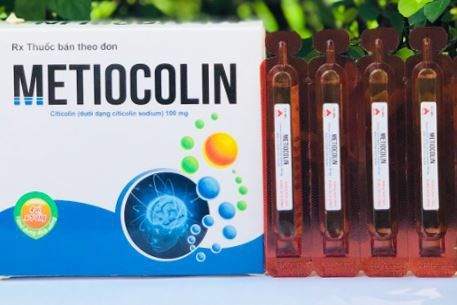This is an automatically translated article.
The article was professionally consulted with Master, Doctor Nguyen Tung Hoanh - Interventional Cardiologist - Department of Resuscitation - Emergency - Vinmec Nha Trang International General Hospital.Acute blood loss syndrome (hemorrhagic shock) occurs due to decreased perfusion in organs and organizations, leading to lack of oxygen and causing cell damage. Let's learn about the symptoms and how to deal with acute blood loss syndrome through the article below.
1. Overview of hypovolemic shock
Hypovolemic shock, also known as acute blood loss syndrome, is the result of decreased preload due to loss of intravascular volume (may be due to fluid, plasma or total blood loss). This condition results in decreased cardiac output, increased systemic vascular resistance to compensate for the decrease in cardiac output, and maintained perfusion of vital organs.
Patients with hemorrhagic shock, if detected and treated promptly, will at least limit the sequelae left behind. If the patient is detected late, not treated promptly, causing prolonged hypotension, leading to multi-organ failure and death.

Hội chứng mất máu cấp do nhiều nguyên nhân gây ra
Causes of hypovolemic shock are as follows:
Trauma: Injuries cause vascular wounds, pelvic fractures, solid organ rupture...; Gastrointestinal bleeding such as peptic ulcer, esophageal varices rupture, intestinal ulcer...; Respiratory bleeding such as hemoptysis; Vascular diseases such as arteriovenous malformation, aneurysm dissection; Conditions related to pregnancy such as uterine rupture or tear, ectopic pregnancy, blood loss during childbirth... 2. Symptoms of hypovolemic shock Shock hypovolemic shock leads to loss of blood volume. acute blood, the patient has the following symptoms:
2.1. Clinical symptoms - General clinical symptoms of shock:
Rapid pulse (usually >120 beats/min), small pulse and difficult to detect; capillary filling time lasts more than 2 seconds; Lower blood pressure: Systolic blood pressure is less than 90mmHg, diastolic blood pressure is 40mmHg less than the patient's baseline blood pressure; Anuria or oliguria with urine output less than 0.5 ml/kg/hour, which may be accompanied by symptoms of sweating, orthostatic hypotension, dry mucous membranes; Consciousness disturbances such as confusion, sluggishness, coma or agitation; Purple veins, cold skin; Decreased central venous pressure, pulmonary capillary pressure, cardiac output and increased systemic resistance. - Clinical symptoms of hypovolemic shock:
Signs of trauma, after surgery; Symptoms of anemia, dry tongue, dry skin, collapsed neck veins, dry oral mucosa and decreased central venous pressure. 2.2. Subclinical symptoms Patients with hemorrhagic shock have the following subclinical results:
Increased blood lactate concentration ≥ 3mmol/l; Decrease in red blood cells, Hematocrit and Hemoglobin; Test results for causation showed increased levels of Amylase, Lipase in acute pancreatitis, blood sugar increased in ketoacidosis or hyperosmolarity.
3. Definite diagnosis of hypovolemic shock The definitive diagnosis of hypovolemic shock due to blood loss is mainly based on clinical symptoms, specifically as follows:
The patient has low blood pressure, rapid and small pulse; Collapsed jugular vein, low central venous pressure; Cold skin, pale mucous membranes; Oliguria or anuria; Consciousness disturbance, lethargy or restlessness; Symptoms suggestive of blood loss such as vascular trauma, gastrointestinal bleeding, ectopic pregnancy, solid organ rupture; Laboratory test results showed increased lactate concentration, decreased hematocrite test, decreased red blood cells. 4. Differential diagnosis of hypovolemic shock Hypovolemic shock is differentially diagnosed with the following conditions:
Cardiogenic shock: Patients with cardiogenic shock often have symptoms including arrhythmia, chest pain , increased central venous pressure, ECG changes, decreased cardiac output, increased pulmonary capillary pressure and systemic vascular resistance. Septic shock: Patients have symptoms of fever, signs of infection include leukocytosis, decreased capillary pressure, increased cardiac output, and decreased systemic vascular resistance. Anaphylaxis : The patient has a history of exposure to allergenic allergens, which may cause hypovolemia. 5. Management of hypovolemic shock The principle of management and emergency due to acute blood loss is to ensure adequate oxygen supply, treat the cause and replace fluids, combined with combination therapy.
5.1. Initial treatment, emergency transportation Initial management when a patient is in hypovolemic shock needs to ensure the following factors:
Control the patient's airway; Ensure ventilation; Bleeding open wounds need to be stopped; Limit not cause additional injuries such as immobilization of the cervical spine in patients with suspected cervical spine injury...; Place a large infusion line, firmly fix it, administer 0.9% sodium chloride infusion, then transfer the patient to a medical facility in the shortest possible time, during the transportation, the patient should be placed in a lying position. equal head.

Hội chứng mất máu cấp cần được xử trí nhanh chóng
5.2. Treatment at the hospital The principles of treating patients with hypovolemic shock at the hospital are as follows:
- Provide maximum oxygen to the patient:
Ensure ventilation and control the airway for the patient; The patient should be lying in a position with both legs high and head low; Breathing oxygen through a mask 6 - 10 liters / minute or through the nose 4-5 liters / minute; In case the patient is at risk of respiratory failure, regurgitation into the lungs or impaired consciousness, they should be intubated; Where mechanical ventilation is indicated, the patient should be avoided under high positive pressure. - Control the cause and compensate:
Measure the patient's central venous pressure, place a central venous catheter or a large peripheral intravenous line (needle size from 14 to 16G); Rapid intravenous infusion of Ringer lactate or 0.9% sodium chloride. Then continue infusion or red blood cell mass based on mean blood pressure and central pressure; In case the central venous pressure is less than 8mmHg, the patient should be given a rapid infusion of at least 20ml/kg Ringer lactate or 0.9% sodium chloride; In case the central venous pressure is greater than 8mmHg and the mean blood pressure is less than 60mmHg, the patient should be given vasopressor drugs Dopamine or Noradrenalin; Patients with acute hemorrhagic shock can receive gelatin or HES solution while waiting for blood transfusion to help keep the fluid in the blood vessel. If there is blood, it is necessary to immediately transfuse red blood cells to help ensure the hemoglobin concentration is greater than 8g/l; In case of hemorrhagic shock where bleeding is still ongoing and no red blood cells of the same group can be found, up to 4 units of group O red blood cells can be transfused immediately. In these cases, a large hemoglobin level should be maintained. more than 8g/dl. - Control the source of flow:
For open wounds that are bleeding need to be covered; For intra-abdominal and intra-thoracic wounds, exploratory surgery should be performed to detect and control the source of bleeding from the wound; Locate bleeding, angiography and embolize treatment for bleeding vessels; In case the patient has gastrointestinal bleeding, the doctor should perform a gastroscopy to diagnose the cause and stop the bleeding. - Combination therapy:
Ensure platelet count > 50,000mm3 and appropriately adjust Prothrombin time by infusion of frozen plasma or platelets; Consider infusion of clotting factor VII when the patient has ongoing bleeding, or diffuse bleeding that cannot be stopped by surgery when the clotting factors are corrected; Use Magnesium Chloride or Calcium Chloride to treat hypomagnesemia, machine calcium due to infusion of anticoagulant blood products with Citrate; Prophylactic antibiotics and treatment of contaminated open wounds; Detection and treatment of complications related to blood product transfusion such as acute lung injury, transfusion-related anaphylaxis. In summary, acute blood loss needs to be diagnosed and treated promptly to limit sequelae for the patient. Therefore, when hypovolemic shock is suspected, the patient should be taken to the hospital as soon as possible for a definitive diagnosis and prompt treatment.
Please dial HOTLINE for more information or register for an appointment HERE. Download MyVinmec app to make appointments faster and to manage your bookings easily.













